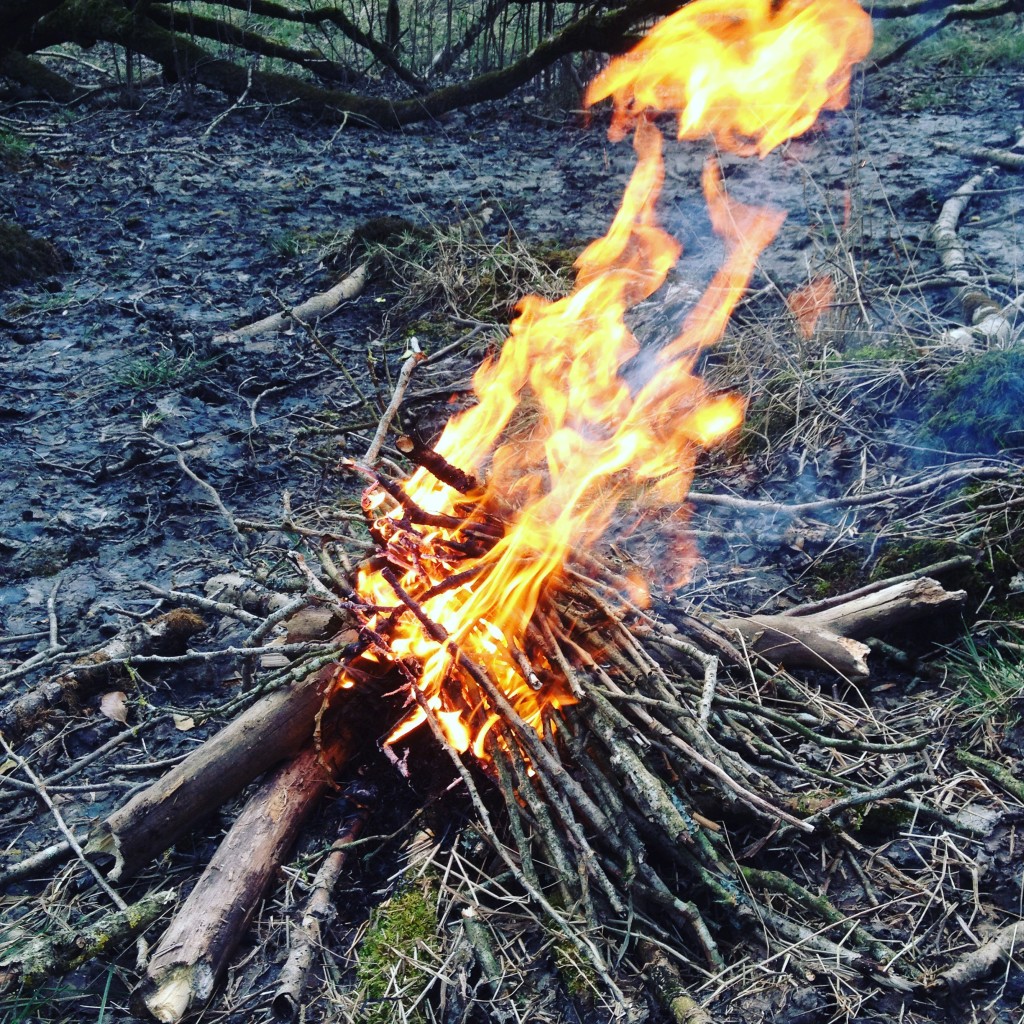By Sean Fagan

Poplar small-twig fire. The twigs, as kindling, burned very well (Photo: Sean Fagan).
.
A few days prior to the date of this post, I was camping - and about to attempt igniting a fire with the thick twigs of a poplar tree (Populus spp.) as kindling.
I've ignited fires before with thick, dead twigs (such as the twigs of ash, Fraxinus excelsior) and although possible, I had to make sure my fire layout was top notch and often used a larger quantity of tinder than usual to compensate for the thicker twigs.
With my campfire set - I brought my flaming match to my tinder - half expecting my poplar twig kindling to have difficulty igniting.
Was I wrong - the poplar twigs burned superbly!
.
When it comes to bushcraft it's always nice to occasionally try things differently.
There is always something new to learn - and departing, once in a while, from the more standard, generic bushcraft advice is good for improving your ability to improvise - an essential aspect of bushcraft & survival.
My overall message from this post is to experiment with the twigs from all available trees species - this will enable you to get to know trees better.
As trees are a fundamental resource for most bushcrafters - the more you know about different tree species the better.
.
Of course the primary focus should be on the more widespread, more common tree species - but there is a lot of merit in learning about other less common, less widespread tree species - because the more bushcraft you do, and the more you travel - the more likely you'll come across lesser-known but useful tree species.
You'll also improve your understanding of tree families and how they are related to each other by the commonality of certain key features.
.
Plant identification skills is one of those skills that has to be consistently chipped away at - striving to expand and refine your knowledge base as you go along.
So, when in the woods - get to know all the trees there - not just the common ones. Get to know their key botanical features and just as importantly - get to know their physical attributes - such as the flammability of the twigs and the distinct properties of its wood.
.
Related articles on this website:
.Link:

Recent Comments